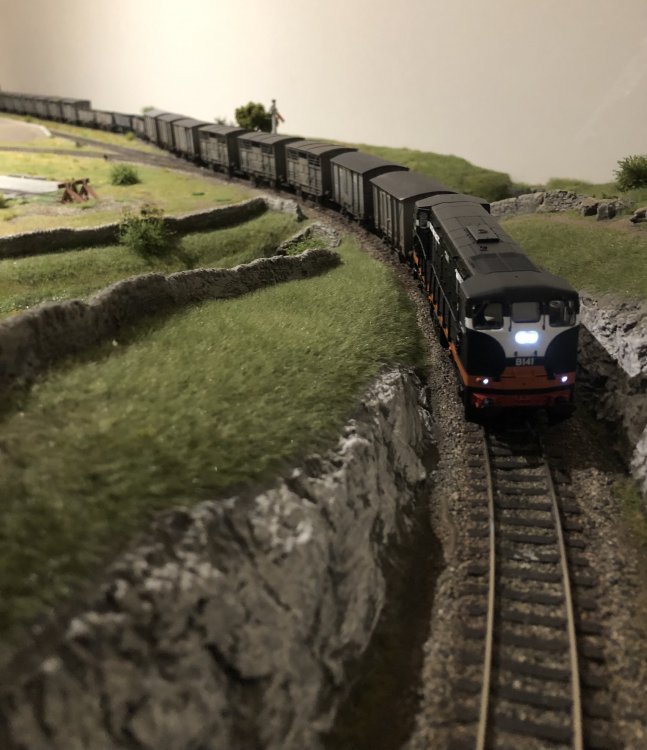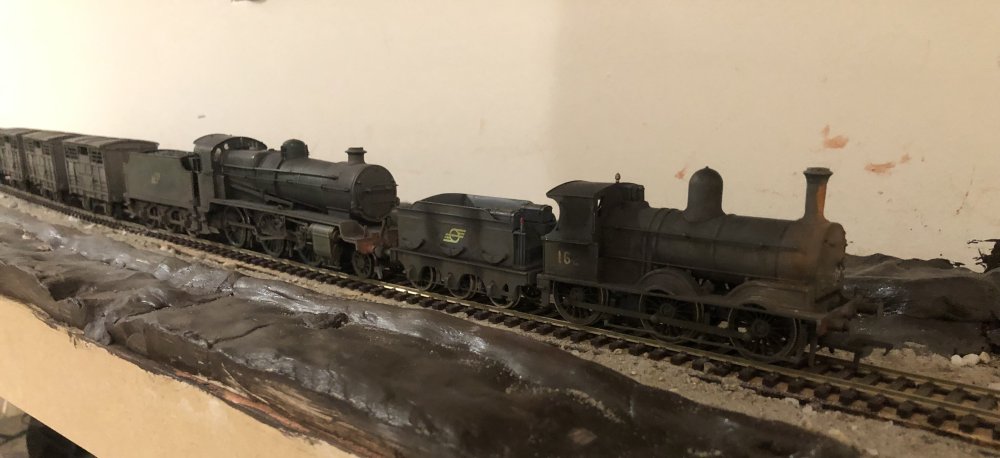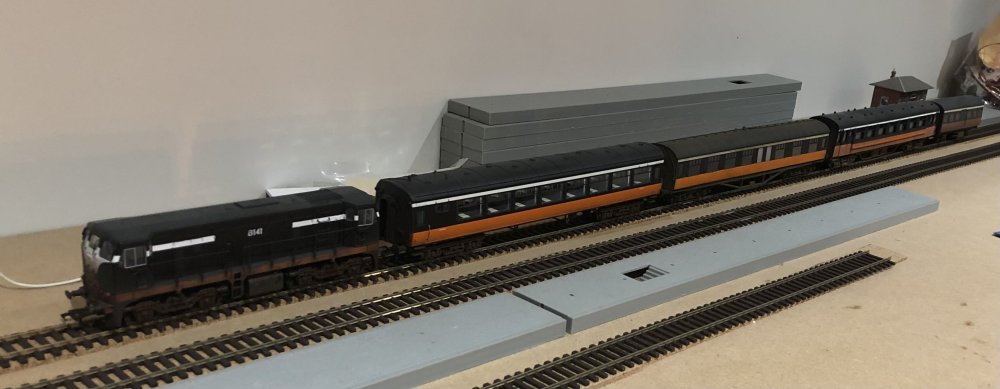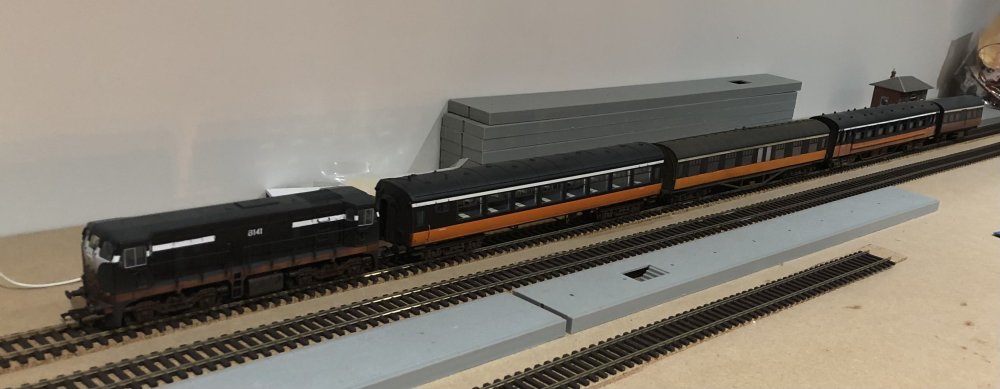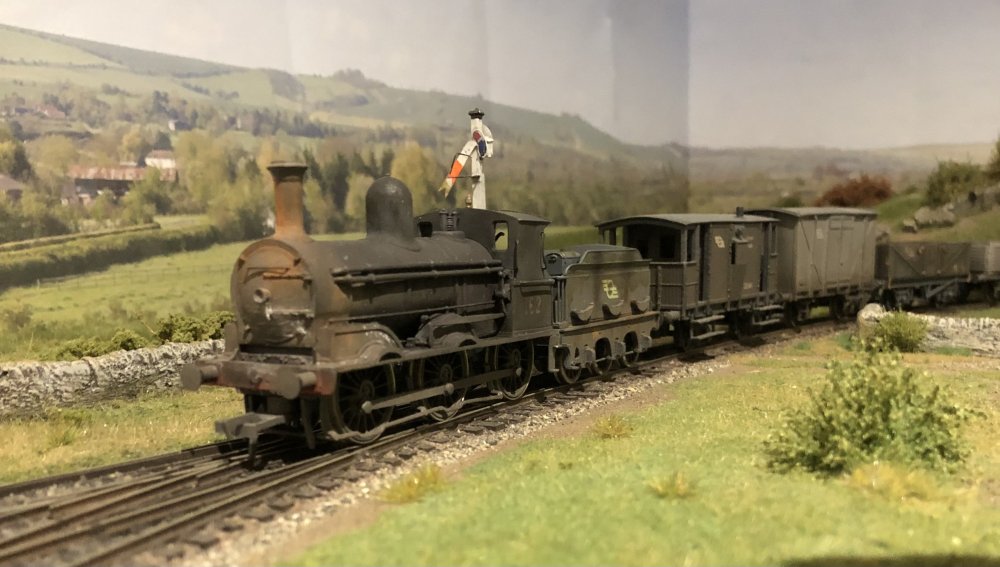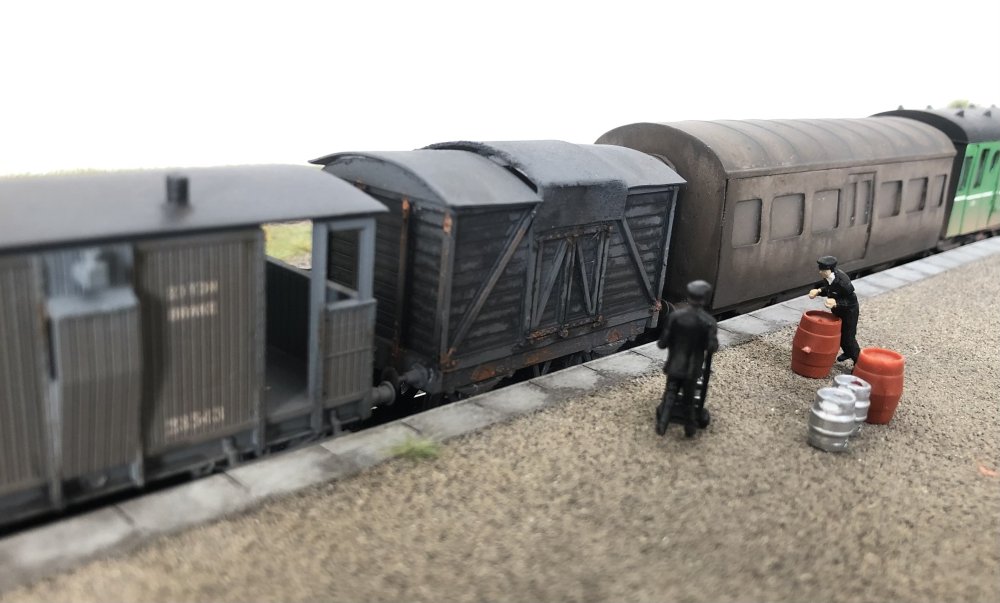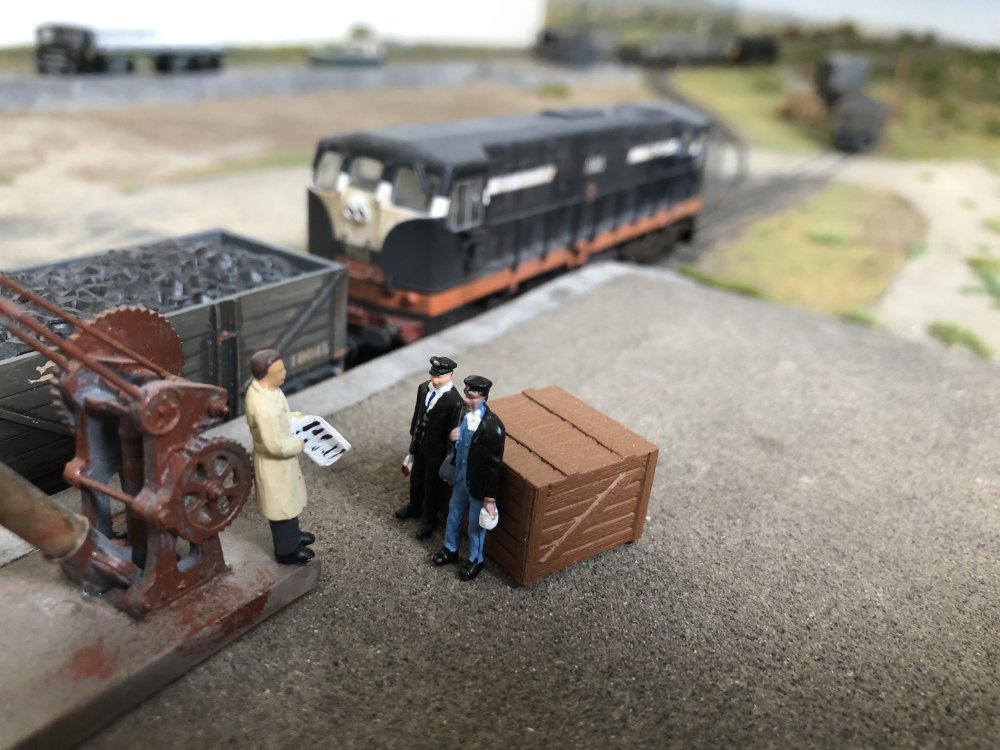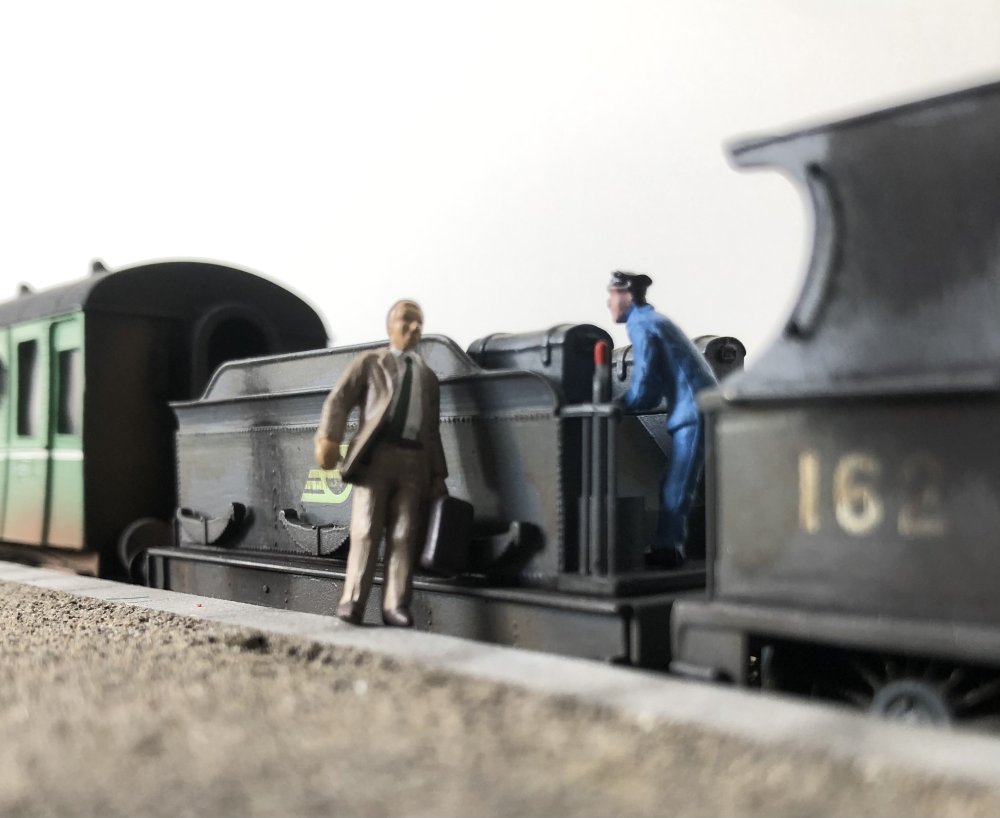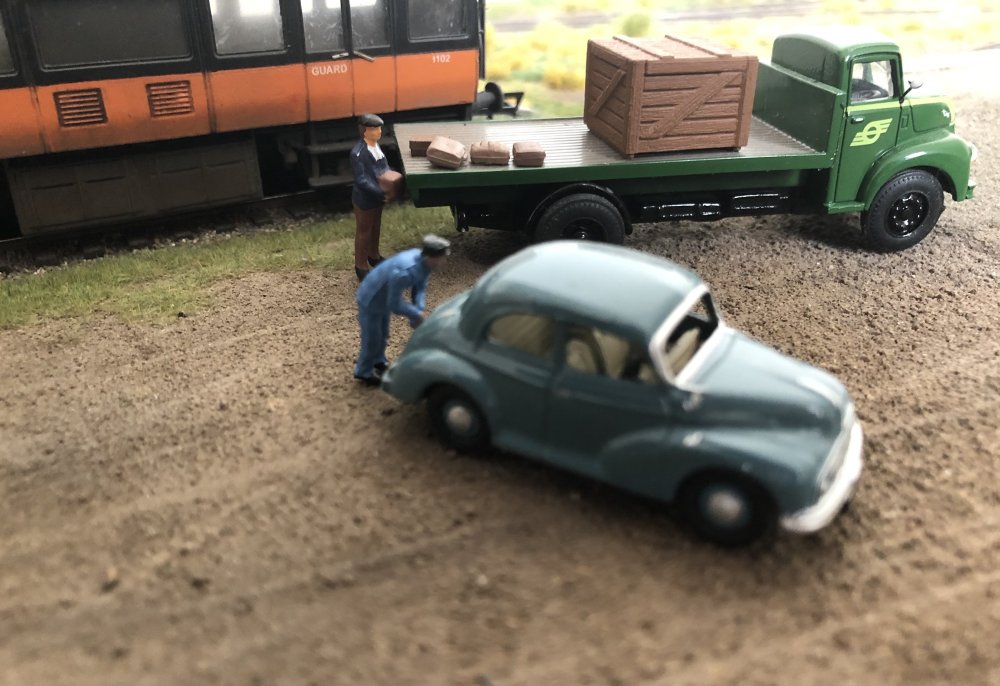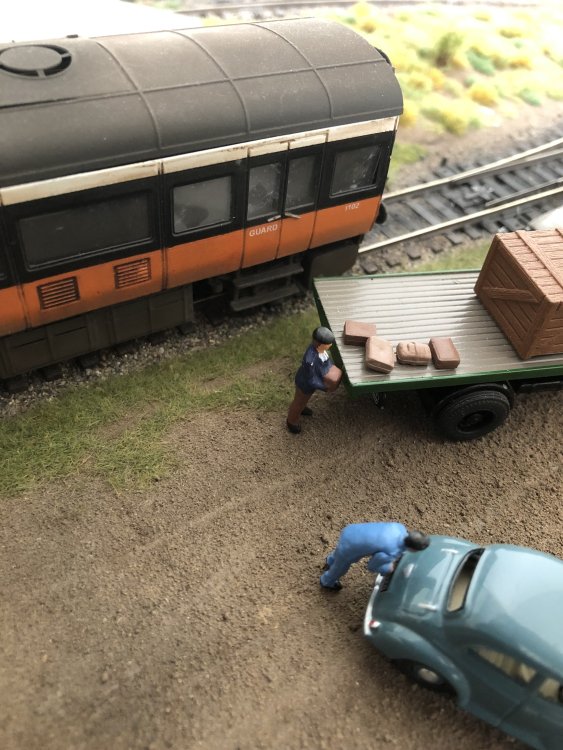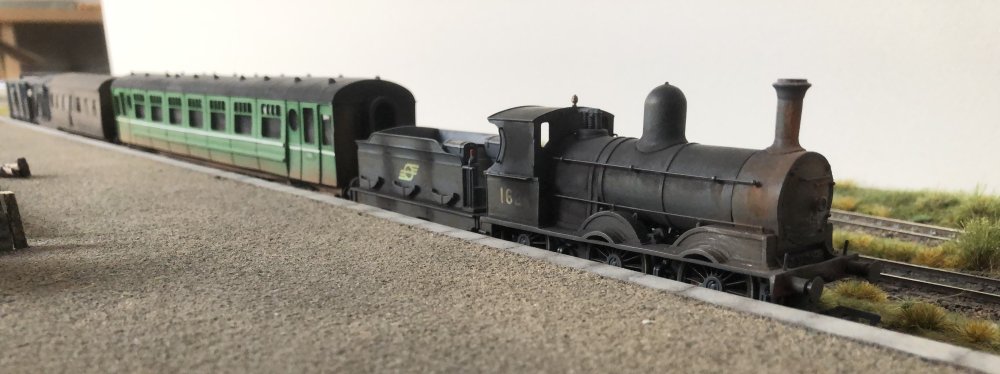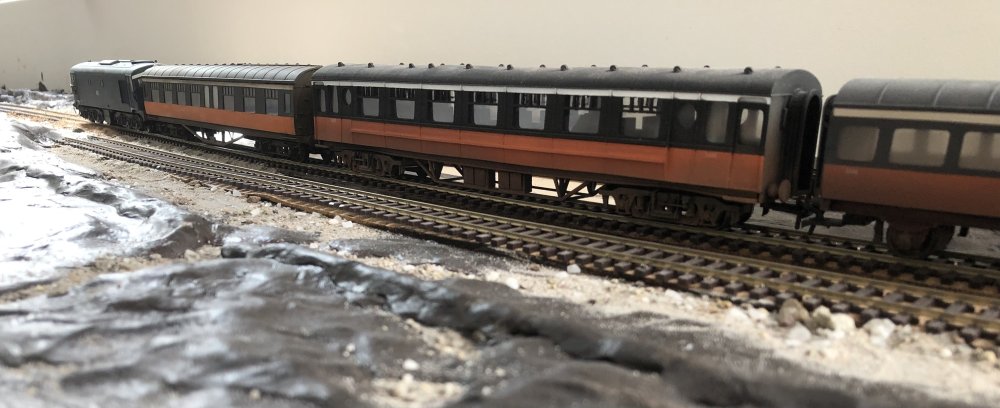-
Posts
15,854 -
Joined
-
Last visited
-
Days Won
393
Content Type
Profiles
Forums
Events
Gallery
Everything posted by jhb171achill
-
How do you mean?............. explain?
-
Not yet, Patrick, but soon, I hope!
-
It’s been a busy market day. At least ten wagons of cattle for North Wall amongst this 25-wagon train….
-
You'd get the odd one as grubby as that - but as you suggest - very few! My recollections were that carriages on Limerick - Ballina and the Cobh branch tended to look the tattiest - though possibly because they were often the oldest still in use. I like your tin van - mine were deliberately done as filthy as the worst photos of them show! - though Silverfox - despite being told over and over again - insist on painting silver vehicles with a black roof - they should be silver - and green ones with a grey roof - THEY should be black! I have a Silverfox tin van which I asked for in green. It arrived in a very dark UTA green - which is even too dark for the early CIE green which they never carried anyway - and with a pale grey roof. I'm going to have to get it repainted. Not often I rant about a manufacturer - but for the prices this really isn't good enough. I have advised SF on several occasions about correct livery details for Irish stuff, but it seems to fall on deaf ears. Mind you, a laminate in Chinese National Railways livery would still look well on Gort! Correct. Anything - locos, coaches, PO vans or tin vans, which were put into traffic as silver, had silver everything - chassis, bogies, roofs, the lot. Anything green - in either the earlier or later green - black roofs. In black'n'tan era of course all roofs black anyway. The UTA, in contrast, had mid-to-dark grey roofs on THEIR green livery.
-
PM'd
-
Anyone got a copy of the may 1956 RM? If so, there's an article I'd like a copy of...............
-
A little confusion there between the numbers "1" and "2"................
-
Only just catching up on some of these posts now. 388 would have been all-grey from building until 1945/6, when it would have been painted lined green. The unique "Rosslare Express" livery applied to it leas than two years before it was scrapped, specifically for the Cork - Rosslare Boat Train, was plain black with red lining. This particular member of the class was never all-black (plain) though one or two other members of the class were. Fascinating little item! Well done and well weathered..... OUTSTANDING!!!
-
Correct! Remember that well...!
-
I think that’s the best way, Mike. But easier for me since I remember the last days of steam, so disgracefully filthy locos were “normal”!
-
Thing is, the fantastically scenic end of Dugort Harbour was done by Kevan McIntosh, so I can claim zero credit for it ….. so it’s starting new skills for me that’s needed now! Thanks for the replies above, folks.
-
It’s the big cattle fair tomorrow, so 162 brings in the goods, then departs with a Woolwich as well, which is on its way to Castletown - superpower on the branch, but there are 43 wagons of beasts estimated in the morning. The drovers start loading at 04:45. Market Day a few years later, and an early morning scene before anyone turns up, at (what will become) Castletown West. There’s a third coach on today, and it’s one of those brand new Cravens….
-
-
Any idea where I’d get one…. or which make?
-
Question for the learned: I'm getting to the stage of putting grass and bushes etc on my layout. I see that grass applicators are some €80-ish or more, and then i'd need one of those mini-hoover-like things to scoop up stray fibres. Does anyone have one I can borrow, or buy 2nd-hand; or if I bought one is there anyone out there who might then buy it 2nd-hand from me? I am reluctant to buy a thing like this which will only really be used once!
-
The van is a "P" van, used for newspaper traffic mostly, but also any sort of general parcels traffic by rail, and mailbags on occasion. The CIE van next to it looks like an ex-GNR one; for modellers, it isn't brown - nothiong with a flyiong snail ever was - it's grey covered with a lot of brake dust! Bear in mind that as now, but more so in the past, "weathering" tended to be a brownish rather than greyish colour, due to oxidisation of brake dust from brake shoes. Can't make out what type of coach it is - no doubt ex-GNR - but as a very outside chance possibly NCC; but it's in UTA green, of course. I wonder if this could be when the loco was heading north following its sale to the UTA?
-
I wonder will it show a South African 12AR threading its way through the Finntown area, or a West Cork 4.6.0T?
-
“Just as well Johnny Mac isn’t on this morning, this thing would wreck his back…” “Ye hear he’s being moved to the buses in Tralee next month?” . ”…..well, it says so in the paper here. Abandonment order, it says. Listowel, Newcastle West, the lot. At least we’re safe here coz’ the buses and lorries can’t get past Sheehan’s Bridge without reversing….”
-
“……..yes, I knew your father well, when he was station master in Knocklong… give him my regards, tell him I’m sorry I missed him…” . ”I can’t get the boot opened…” ”You’d have been better bringing your uncle’s Fordson and that turf trailer he has….” . 162 prepares to leave with the midday mixed in July 1960, and A55 leaves Castletown with the morning down passenger in April 1964.
-
This clarifies the details of the Galway main line; often thought by many to have been FULLY double at one stage, but it wasn't quite........
-
Someone told me at some stage that the presenter, the excellent Anne Cassin, had relatives on the railway herself........... yes, she seems to have travelled on a 29. Mad things to put on the Enterprise - why not an ICR? RTE included a shot of Inchicore Works, footgae of T & D cattle trains at Castlegregory junction, and interior shots of a driver in a West Clare "F" class diesel. Typical lazy research. Airfixfan, of this parish, was of course featured, along with several of our good colleagues from the Donegal Railway Heritage Centre and RPSI Whitehead. Why, oh why, oh why, though, have they a black dome on "Drumboe"! Fix it, lads, fix it before I run outta smelling salts..........!
-
As a happy owner of a Midland 2.4.0 I highly recommend it!
-
Well worth awaiting!
-
Wouldn’t have thought so - the GSR stripped all of its maintenance equipment bar the odd screwdriver!
.png.c363cdf5c3fb7955cd92a55eb6dbbae0.png)


